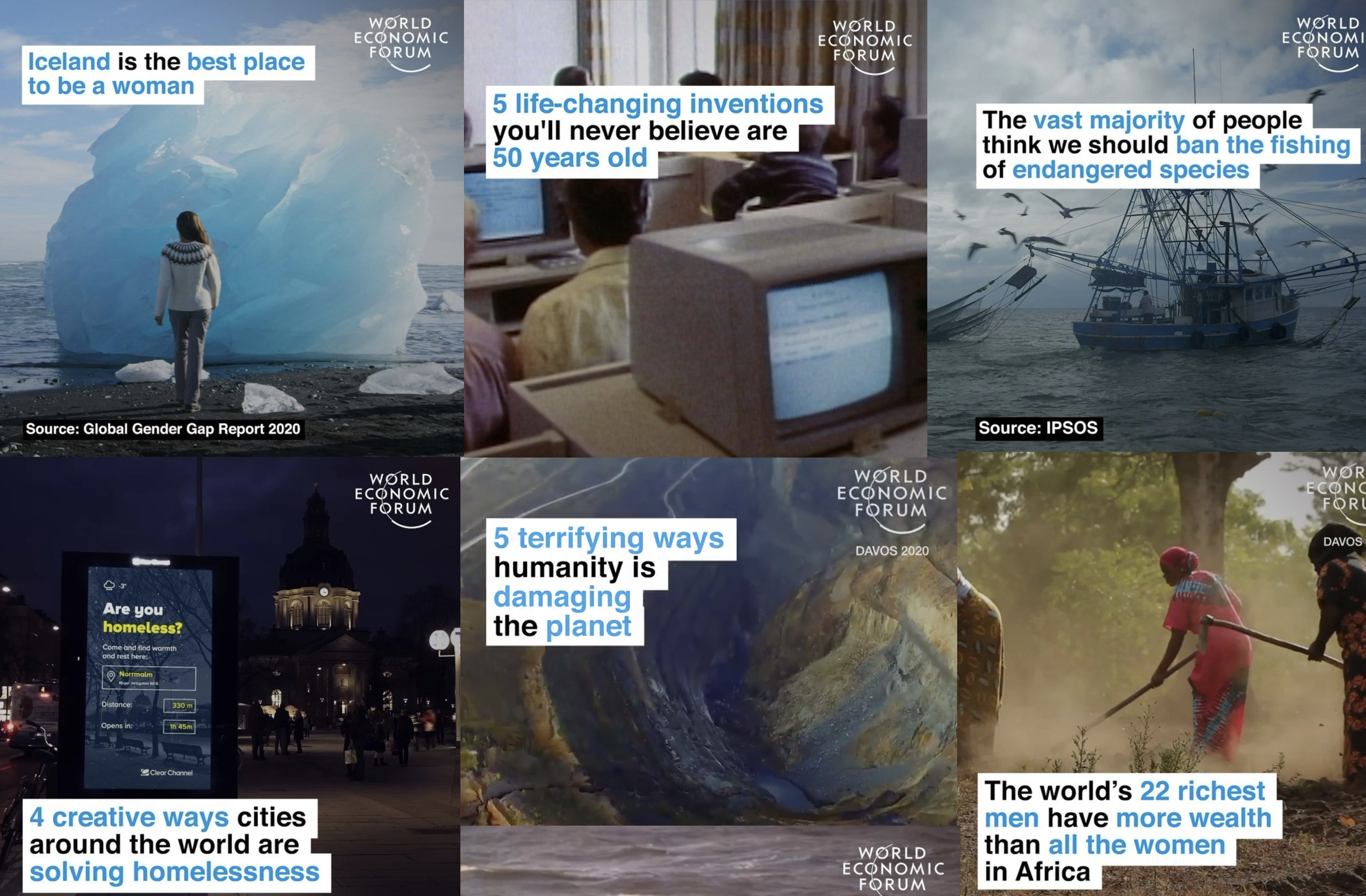Davos Is Just a Bunch of Boomers Sharing Viral Videos

Credit to Author: Edward Ongweso Jr| Date: Thu, 23 Jan 2020 19:20:46 +0000
For a long time, the World Economic Forum (WEF) has been struggling to pitch itself as part of the solution to global inequality and climate change, instead of an entrenched part of the problem. To that end, the organization has offered empty rhetoric about corporate responsibility and promoted “green” fuel for private jets. It has also flooded social media with short utopian videos cut to maximize their potential virality.
For nearly a year, the WEF made thousands of posts across Twitter, Facebook, Instagram, and LinkedIn following a very simple formula: feature a short video, center it around some social or political issue, present a solution in the form of a technological innovation or political reform, then invite the viewer to “Read more” by following a link to a Davos report about that issue.
The aesthetic is always the same, and is the cheapest, easiest way to mass-produce #content: The videos almost never have narrators, always use one-note stock music, and almost always use footage WEF has borrowed from someone else. The videos feature a few boxes of text slapped across the screen, a few close-ups of people, a few wide-shots of landscapes of crowds, state the problem then offer solutions then a call to urgency—we get it.
This is called “aggregated video,” and it has been inescapable on social media ever since news organizations made their pivots to video content, and have persisted despite the revelation that Facebook fabricated the video views numbers which spurred that pivot.
We shouldn’t be surprised that the WEF is using such a shallow format to drive traffic to its equally shallow posts and recommendations. But what is interesting is how consistently the videos say the quiet part out loud. Given that Davos is happening right now, this is a good chance to see in action what Greta Thunberg meant when she said WEF only offered “empty words and promises which give the impression that sufficient action is being taken.”
Just look at one example, illustrative of nearly every video, which centers on “5 terrifying ways humanity is damaging the planet.” The first half takes great pains to obscure who or what is actually responsible for our ongoing ecological crisis and the second half establishes urgency from an economic, not moral, lens.
In this telling, it's "humans" who have devastated the planet's biodiversity "despite making up 0.01 percent of all living things" and it's "humans" who have cut down half the planet's trees since the dawn of civilization. It's "human actions" that threaten mass extinction and "human activities" that have reshaped the Earth's land and seas.
Rendered invisible are more inconvenient truths: that the top 10 percent of humanity is responsible for half of all carbon emissions; that capitalism’s fundamental drive to perpetually extract, exploit, and grow—not individual consumption choices—are pushing us to the brink; that the people who profit from setting Earth on fire are now demanding we trust their firefighting efforts.
WEF is trying to shield the reputations of the rich behind these cheap, mass-produced, cookie-cutter videos. It’s saying “trust us to fix this.” Plutocrats keep coming to Davos, blame the rest of the world for the problems they have caused, act like they’re fixing it, then patiently position themselves to keep raking in money. This is what most of Davos’ regular attendees are about: vigorously nodding along as the status quo is savaged, hoping that it will be a substitute for giving up their power, privilege, and future profits.
This article originally appeared on VICE US.